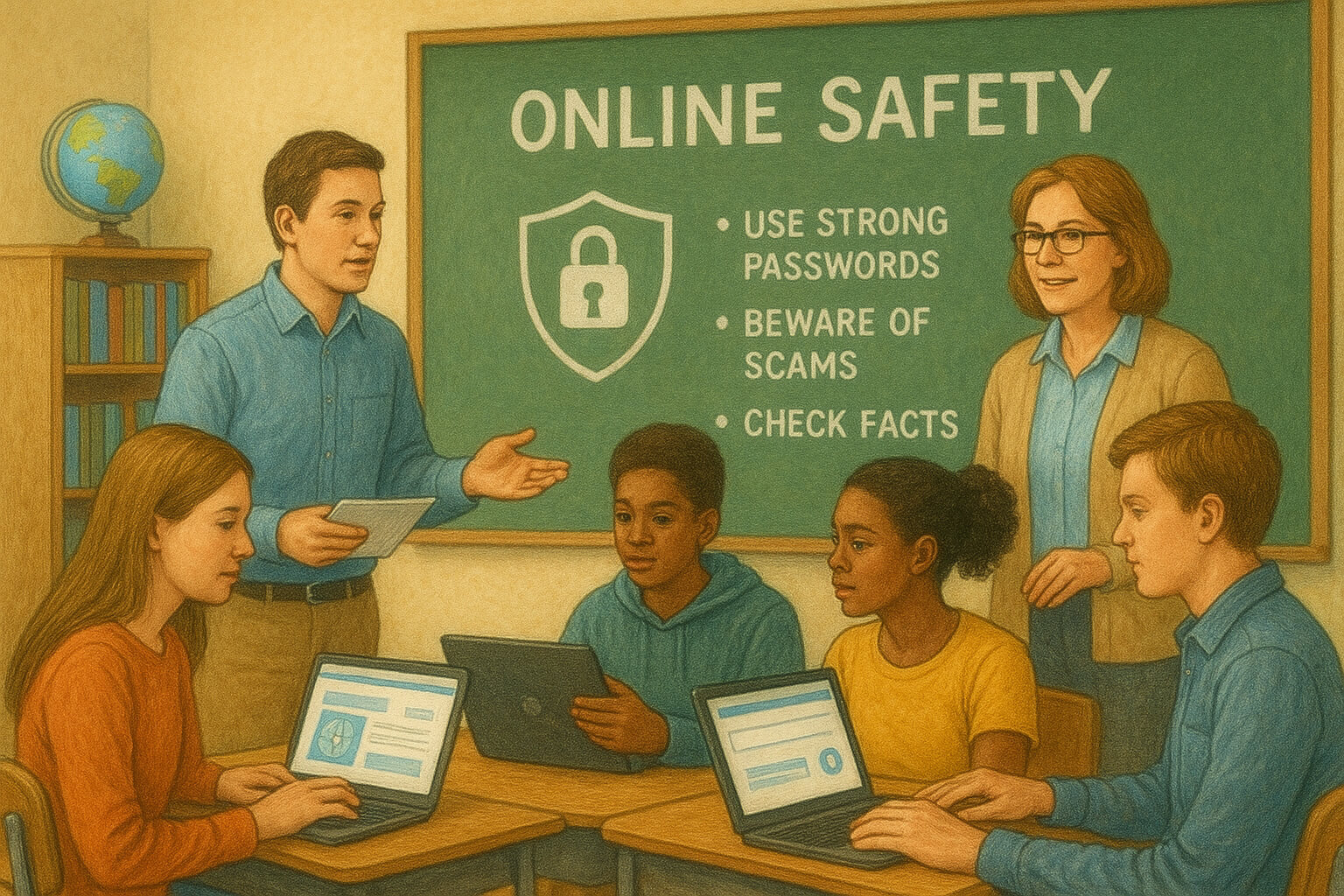Digital Literacy for Today's Youth: Essential Skills

In today’s interconnected world, digital literacy has become just as vital as reading and writing. For youth, especially, the ability to navigate digital landscapes responsibly and effectively is no longer a luxury—it’s a core survival skill in education, employment, and everyday life.
From virtual classrooms and social media to AI-powered tools and digital job applications, young people are immersed in technology. But using digital devices isn’t the same as understanding them. True digital literacy means knowing how to use digital tools wisely, ethically, and safely—and that makes all the difference.
What Is Digital Literacy, Really?
Digital literacy refers to the skills required to:
- Access and evaluate information online
- Communicate responsibly in digital environments
- Understand how digital tools work
- Use technology to create content
- Protect privacy and security
The American Library Association defines digital literacy as “the ability to use information and communication technologies to find, evaluate, create, and communicate information, requiring both cognitive and technical skills.”
It’s not just about typing fast or browsing the internet—it’s about being an informed, ethical, and empowered digital citizen.
Why Digital Literacy Is Crucial for Youth
Here’s why it matters more than ever:
- Academic Success
- Digital tools are embedded in modern learning. Research shows that students with digital literacy skills perform better academically, particularly in project-based learning and research-driven assignments.
- Related: Learn how tech-enabled youth mentorship programs incorporate digital tools to enhance learning outcomes.
- Online Safety
- From phishing scams to cyberbullying, the internet can be risky. Digital literacy teaches youth how to recognize dangers, protect personal data, and report inappropriate behavior.
- Example: UNICEF’s report on digital skills emphasizes that digitally illiterate youth are more vulnerable to online threats.
- Career Preparedness
- Over 90% of jobs today require some level of digital competency. From resume building to remote work and coding, tech fluency is key to entering—and succeeding in—the workforce.
- Related: Explore how career prep programs for teens are embedding digital training into their curriculum.
- Civic and Social Engagement
- Digital platforms are today’s town squares. Youth with digital skills can advocate for causes, collaborate globally, and challenge misinformation—skills essential for leadership in the 21st century.
Core Digital Literacy Skills Every Youth Should Learn
Let’s break down the essential competencies:
- Information Literacy
- Knowing how to search for and evaluate credible sources online. This skill helps combat fake news and misinformation—especially on social media platforms.
- Tip: Teach students to use fact-checking websites like Snopes or Media Bias/Fact Check.
- Digital Communication
- Email etiquette, collaboration tools (like Google Workspace or Microsoft Teams), and respectful discourse in forums and chats are vital for both school and work.
- Cyber Safety and Privacy
- Understanding privacy settings, identifying phishing scams, and knowing the consequences of oversharing online. Password hygiene and two-factor authentication are also a must.
- Related: Some youth programs use cybersecurity workshops as part of community-based digital literacy efforts.
- Critical Thinking
- Teaching kids not to accept everything they read online at face value. This involves questioning sources, spotting bias, and recognizing manipulation tactics (especially in advertising and political content).
- Content Creation & Copyright
- From blogs to YouTube videos, young people are creators—but they need to understand copyright laws, plagiarism, and ethical content sharing.
- Digital Etiquette (Netiquette)
- Respecting others’ opinions, avoiding trolling or cyberbullying, and engaging with empathy online are part of digital citizenship.
- Pro tip: Encourage participation in digital volunteering or online activism as a positive outlet. See how young changemakers use online platforms to make an impact.
The Role of Schools, Parents, and Communities
Schools
- Schools are the first line of defense against digital illiteracy. Incorporating digital media analysis, computer science, and even AI literacy into curricula helps prepare students for future careers.
- Some school systems are even partnering with non-profits to bring free digital literacy workshops to underserved areas.
Parents
- Parents must stay involved by:
- Monitoring online activity
- Teaching basic safety practices
- Having open discussions about digital habits
- Using parental controls is helpful—but conversations are more powerful than filters.
Community Organizations
- Libraries, non-profits, and after-school programs play a vital role. Many offer free coding camps, internet safety seminars, and digital mentorship programs.
- Related: See how non-profits are closing the digital gap for marginalized communities with limited tech access.
A Path to Empowerment
- Digital literacy isn’t just a school subject—it’s a life skill. It teaches youth how to engage safely, learn effectively, and work competitively in an ever-evolving digital society.
- Whether it’s mastering email etiquette, detecting deepfakes, or using AI responsibly, digital literacy empowers young people to control technology—rather than be controlled by it.
Final Thoughts
As we shape the next generation of global citizens, we must prioritize digital literacy alongside reading, math, and science. It’s not just about protecting kids online—it’s about equipping them for a future defined by digital fluency.
The earlier we start, the better we prepare our youth for the world they already live in.
